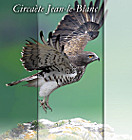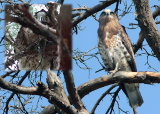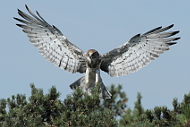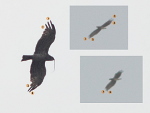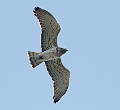Francesco Petretti reports the findings of a long term study of the feeding ecology of two populations of Short-toed Eagle in Western Central Italy /map/: Maremma Regional Park /map/ and Tolfa hills. In both areas snakes represented the bulk of the diet, but there were significant differences in the selection of prey species with a higher number of “not-conventional prey species”, e.g. mammals and toads, in Maremma Regional Park and a stronger predation on Hierophis (Zamenis) viridiflavus in Tolfa hills. The study is in progress and will be implemented in 2014.
• Francesco Petretti, 2012 – Ecologia alimentare del Biancone (Circaetus gallicus) in due aree di studio in Italia Centrale [Feeding ecology of Short-toed Eagle in two study areas in Central Italy] –  (It) – presentation, 20 pages.
(It) – presentation, 20 pages.

The presentation is published on the Stazione Romana Osservazione e Protezione Uccelli (SROPU) website. It contains tables, diagrams and beautiful photos of Short-toed Eagles and snakes.
